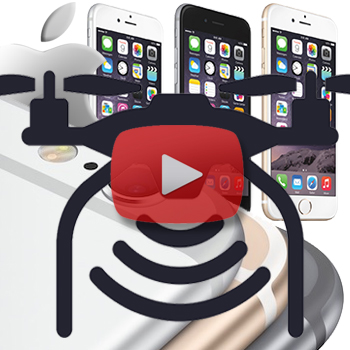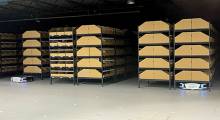As reported by the International Business Times, you can forget PlayStations, iPhones, or even those quasi-legal hoverboards - this holiday season, look for drones to become the must-have Christmas gift.
The Federal Aviation Administration expects one million drones to be sold by New Year’s, and that number will only keep growing - despite the fact that they’re not totally, well, legal.
In the midst of the drone frenzy, the International Drone Exhibition kicked off in Los Angeles at a sprawling convention center on Dec. 11. The event was being billed as one of the largest drone events ever: it featured over 100 exhibitors from over two dozen countries and attended by over 20,000 people. “The drone economy is exploding,” Keith Kaplan, the organizer of the event, said. “And that’s what you’re seeing here.”
It’s not hard to see why drones are becoming so popular: The technology is getting cheaper and the drones are becoming easier to fly. The most interesting part of the exhibition was not one particular drone - it’s how differentiated they’re becoming. There’s a drone for everything, it seems.
There are drones for drone races, drones outfitted with thermal cameras for search and rescue operations, drones for police surveillance (yes, really) drones use for agriculture use, and even one company that claims it’s building a drone delivery system, sort of like Amazon prime, but for e-commerce companies.
Search SC24/7 for “Drones”
Now, if the thought of thousands of drones hovering above sounds like a scary future, well, the government would tend to agree. Right now, the FAA is deliberating on regulations that will be imposed on the drone market by 2017. The most recent FAA task force report, published in November, recommended several guidelines for drone operators. In fact, the FAA is now requiring drone owners to register any drone that weighs above 250 grams with the government.
The entrepreneurs recognize that regulation might affect their business, but for now, it’s not slowing them down. One of the exhibitors, Dan Edwards, whose company, AirVuz, is creating the “YouTube for drone footage,” says that though the use of drones is still in its infancy, it’s poised to become a massive industry.
“Drones are the new iPhone,” Edwards says.
Source: International Business Times
CEO Keith Kaplan discusses ‘All Things Drone’
Directions recently caught up with Keith Kaplan, co-founder and CEO of the Tesla Foundation Group, to discuss “all things drone”, and posed the question: “Are drones, or sUAVs, really bringing disruptive technology to the GIS industry?”
Kaplan is uniquely qualified to answer this question because he is head of the Unmanned Aerial Vehicle Systems Association and is also organizing the 2nd Annual International Drone Expo to be held in Los Angeles on Dec. 11-12. He is working closely with the FAA on regulating the new Wild West of drones, and is actively assisting UAVSA members applying for Section 333 commercial UAV flight exemptions. Kaplan has been featured on NPR, Fox, CBS, ABC and NBC, as well as in stories by Reuters and Los Angeles Times, among others.
What is “disruptive technology”? When Hewlett-Packard introduced the HP-35 calculator in the early 1970’s, it ushered in a new era of portable scientific calculating. The effect was far-reaching; it not only terminated production of most slide rule products, it also decimated the entire mechanical calculator industry. That was disruptive technology.
Apple’s iPhone is probably the best, contemporary example of disruptive technology.
Not only did smart phones become an industry standard, but the iPhone also spawned collateral markets. Companies, and even individuals, can now write applications to sell in Apple’s App Store. Music, video and photos became part of the smart phone’s ecosystem.
Related: PINC Air Gets Green Light from the FAA

Article topics
Email Sign Up



















